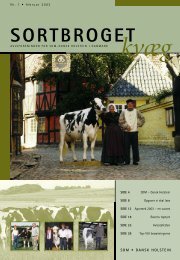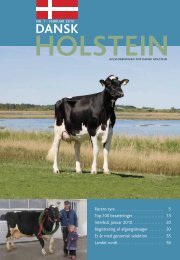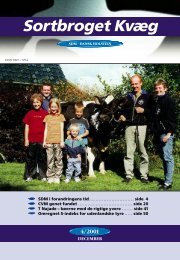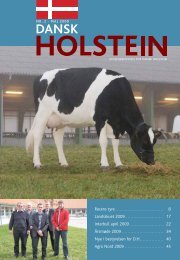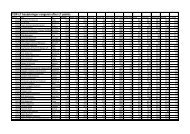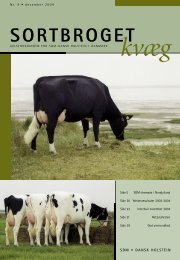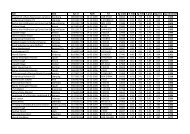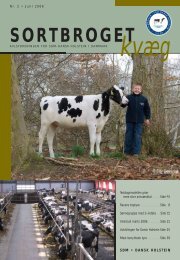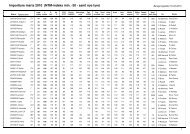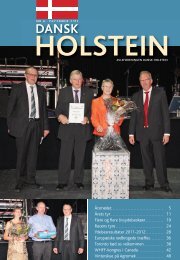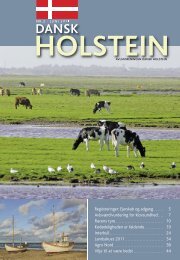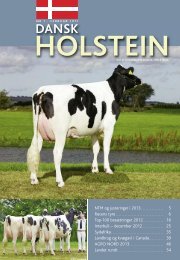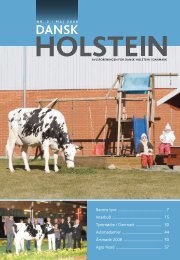2012 WORLD HOLSTEIN CONFERENCE - Dansk Holstein
2012 WORLD HOLSTEIN CONFERENCE - Dansk Holstein
2012 WORLD HOLSTEIN CONFERENCE - Dansk Holstein
You also want an ePaper? Increase the reach of your titles
YUMPU automatically turns print PDFs into web optimized ePapers that Google loves.
SESSION 1: THE GENOMIC REVOLUTIONGenomic Developments—Past, Present, and FutureDIDIER BOICHARD (FRANCE)Didier Boichard graduated from the Agricultural University of Parisand made his PhD focus on fertility of dairy cattle. He joined theFrench National Institute for Agricultural Research (INRA) in 1982and made his main research contributions in dairy cattle geneticsand breeding, particularly on the analysis of genetic variability ofproduction and functional traits. He was in charge of the Frenchnational genetic evaluation for dairy cattle, sheep and goat. Heconducted several projects for QTL detection and fine mapping,within breed as well as in crossbreeding. In 2002, in close collaborationwith the French breeding industry, Didier implemented a large scalemarker-assisted selection program, which transformed in 2008, intoa genomic selection program. From 2002 to 2009, he headed theAnimal Genetics Division of INRA. He is presently leading the Cattle Genetics and Genomics group at INRA.He is author or co-author of 70 peer-reviewed papers and is Editor-in-chief of the journal Genetics SelectionEvolution.Within breed genomic selection has been successfully implemented in dairy cattle, taking advantage of very favorableconditions: good genomic resources and tools, large reference populations (RP), high profitability… Recentdevelopments include enlargements of RP within international consortia; use of low-density chips and imputationto decrease costs; large scale implementation in breeding schemes as well as on farm. However, further developmentsare needed for enhanced benefits. Linkage disequilibrium between markers and genes of interest must be increasedthrough higher markers density, by using haplotype information (as presently in the French evaluation system), andthrough discovery and use of causative mutations. The efficiency of current evaluation systems is too dependent onthe relationship between candidates and the RP. Future evaluations should be more robust to this in order to avoidrecurrent update of the RP and accurately evaluate original animals. Taking advantage of across breeds informationwill be crucial even in <strong>Holstein</strong> for some traits difficult to record such as feed efficiency. Such an across breedevaluation will rely on high density genotypes and whole genome resequencing of an increasing number of animals.Another main challenge is the inclusion of new traits in breeding objectives. Obtaining relevant phenotypes willdepend on our capacity to collect precise information, from a technical viewpoint and with the appropriate economicmodel. Primary target traits are fatty acid milk composition through MIR data and health traits. For most of thesenew traits, the RP will be composed of genotyped cows with individual performances.09



